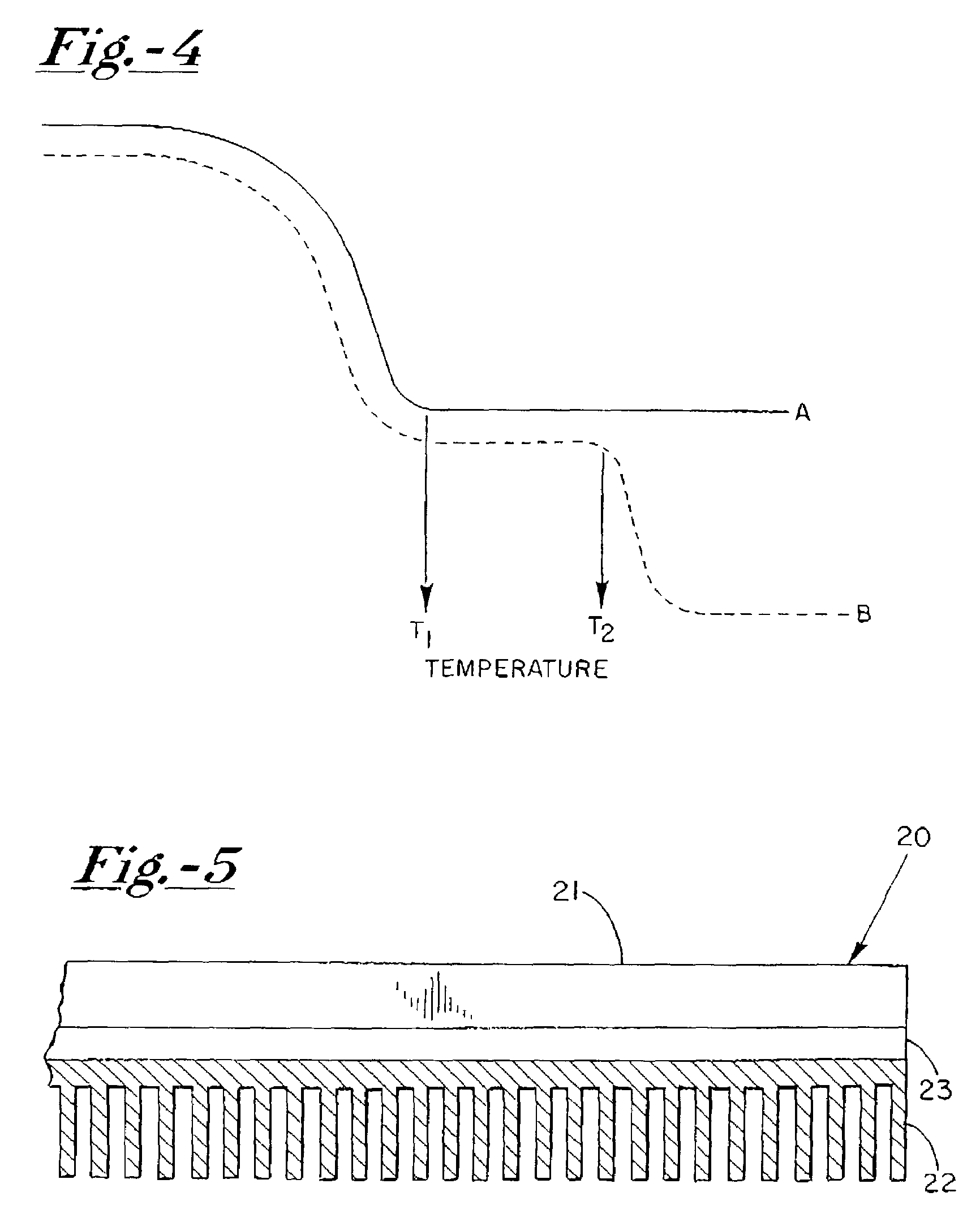Thermal interface pad utilizing low melting metal with retention matrix
a technology of thermally conductive interface and retention matrix, which is applied in the application, horticulture, botany apparatus and processes of liquid metals for this purpose, and can solve the problems of reducing the effectiveness of affecting the thermal properties of compounds. , to achieve the effect of reducing the overall viscosity, reducing the drag, and altering the viscosity
- Summary
- Abstract
- Description
- Claims
- Application Information
AI Technical Summary
Benefits of technology
Problems solved by technology
Method used
Image
Examples
Embodiment Construction
A. The Polymer Matrix
[0031]As indicated, the polymer matrix is preferably selected from paraffin wax, microwax, and silicone waxes comprising alkyl silicones. For most purposes waxes having a melting point of about 50–60° C. have been found particularly suited for this application. It is generally desirable to utilize a polymer matrix which undergoes a phase change at a temperature of about 10° C. lower than the phase change temperature of the liquid metal alloy. For certain purposes, soft silicone polymer consisting of a reactive siloxane elastomer, acrylic syrups, epoxy resins, either crosslinked or “B-staged”, polyurethane resins are found to be useful.
[0032]One silicone wax utilized in the formulations of the examples is CP-533 (M.P. of 60° C.) (Genesee Polymer of Flint, Mich.), with these materials being, of course, commercially available. A microwax employed is that material designated as “M-7332” (M.P. of 55° C.) available from Moore and Munger of Shelton, Conn. Another polym...
PUM
| Property | Measurement | Unit |
|---|---|---|
| melting point | aaaaa | aaaaa |
| melting point | aaaaa | aaaaa |
| temperatures | aaaaa | aaaaa |
Abstract
Description
Claims
Application Information
 Login to View More
Login to View More - R&D
- Intellectual Property
- Life Sciences
- Materials
- Tech Scout
- Unparalleled Data Quality
- Higher Quality Content
- 60% Fewer Hallucinations
Browse by: Latest US Patents, China's latest patents, Technical Efficacy Thesaurus, Application Domain, Technology Topic, Popular Technical Reports.
© 2025 PatSnap. All rights reserved.Legal|Privacy policy|Modern Slavery Act Transparency Statement|Sitemap|About US| Contact US: help@patsnap.com



